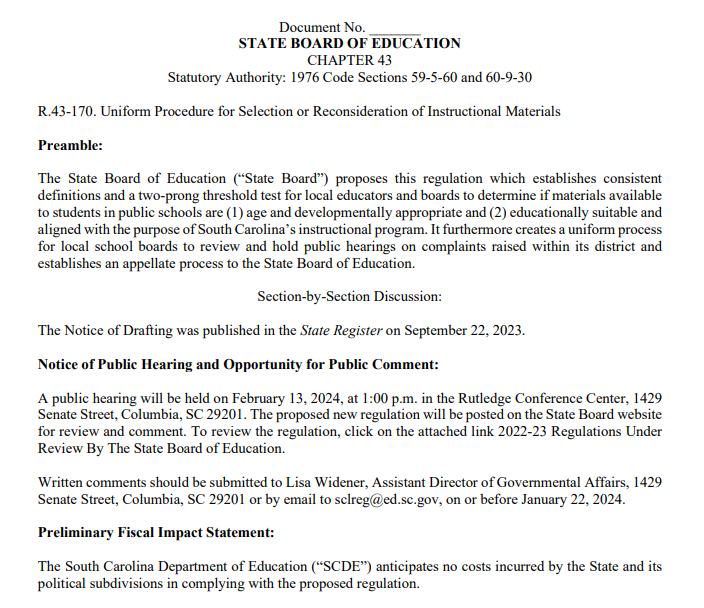The winning formula: How to fix South Carolina’s school funding system
South Carolina’s K-12 education system suffers not despite its variety of revenue streams, but because of them. A tangled web of different revenue sources, costly mandates and new programs has pushed up administrative costs while perpetuating student underperformance.
And worse, the current system diminishes transparency, insulating it from reform. Parents and taxpayers should demand better for South Carolina students.
Fortunately, this problem is solvable. In a new report, the Palmetto Promise Institute proposes a modernized, robust and fair formula to address South Carolina’s school funding challenges.
Currently, South Carolina’s school funding formula has a number of problems. The potency of the state’s once-central vehicle for funding, the Education Finance Act, or EFA, has declined over time. As state lawmakers have created many new programs through the Education Improvement Act, or EIA, and even the Education Accountability Act, the system has grown cumbersome, leading to poor spending practices and less accountability.
“We have EFA and EIA, when what we really need is just the E,” said House Ways and Means Chairman Brian White.
That’s why the Palmetto Promise Institute proposes an “EFA 2.0.”
The starting point of the new formula would be to establish a simple level of “foundation aid.” This would entail determining the base costs required to serve a single student. Rather than leaving funds in the hands of economic whims, an EFA 2.0 formula would be predicated on student costs, determining a “foundational” level of per-pupil funding.
Additionally, the formula would update the current EFA’s outdated weighting system by improving how it controls for factors such as poverty, English proficiency and special needs.
EFA 2.0 would also revise the methodology by which state and local funding contributions are calculated. The state would identify each district’s “ability to pay” and mandate a specified minimum levy. These rates would be re-evaluated annually.
To simplify the complicated network of revenue streams, the revamped system would consolidate them. (“Just the E,” in White’s words.) State appropriations, for example, would come entirely from the state’s general fund. Merging revenue sources would eliminate the need for multiple, ineffectual funding streams.
This system would finally allow South Carolina to focus on the quality of education funding instead of the quantity of education programs.
Of course, there are immense challenges that come with reforming an entrenched system. A system as complex as South Carolina’s K-12 education funding is difficult to change overnight.
That’s why EFA 2.0 comes with a cautious, five to eight year phase-in process, ensuring targeted success as reforms are implemented.
Secure funding streams that reflect student costs would be more conducive to student performance, and therefore more deserving of taxpayer investment. Plus, designing a simplified formula to this end would promote transparency.
The time is ripe for EFA 2.0. South Carolina students – and taxpayers – can’t afford to wait for “just the E” much longer.




